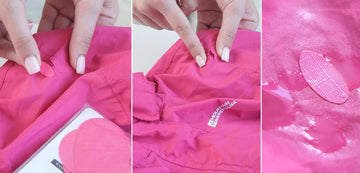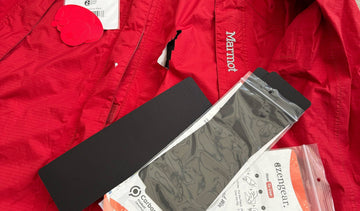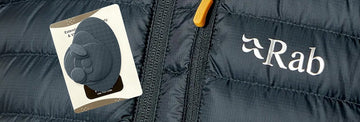Cold Weather Dressing: Principles to Stay Warm in the Great Outdoors
by Emily Jannet on Oct 15, 2023
As the temperatures drop and the world turns into a winter wonderland, outdoor enthusiasts eagerly await the opportunity to embrace the cold weather. Whether you're planning a hike, a camping trip, or simply want to enjoy a crisp, snowy day, dressing appropriately for cold weather is crucial to ensure you stay warm, comfortable, and safe. In this comprehensive guide, we will explore the principles of dressing for cold weather to help you enjoy the outdoors to the fullest while staying warm and cozy.
-
Layering: The Foundation of Cold Weather Dressing
The first and most crucial principle of cold weather dressing is layering. Layering allows you to regulate your body temperature by adding or removing clothing as needed. The three primary layers are:
Base Layer:
The base layer, often made of moisture-wicking materials like merino wool or synthetic blends, is your first line of defence against the cold. Its primary function is to wick sweat away from your body, keeping you dry and preventing moisture from making you feel colder.
Insulating Layer:
The insulating layer traps warm air close to your body. Materials like fleece, down, or synthetic insulation provide excellent insulation properties. The thickness of this layer can vary depending on the weather conditions.
Outer Layer (Shell):
The outer layer, also known as the shell, protects you from wind, rain, and snow. It should be windproof and waterproof, but also breathable to prevent moisture buildup. Popular materials for outer layers include Gore-Tex and other technical fabrics.
-
Choose the Right Fabrics
Selecting the right materials for your clothing is crucial when dressing for cold weather. Here are some fabric options for each layer:
Base Layer:
Merino wool: Natural, moisture-wicking, and odor-resistant.
Synthetic blends: Excellent moisture-wicking properties and fast-drying.
Insulating Layer:
Fleece: Lightweight, breathable, and excellent warmth-to-weight ratio.
Down: Exceptional warmth, compressible, but loses insulation when wet.
Synthetic insulation: Maintains warmth when wet and dries quickly.
Outer Layer (Shell):
Gore-Tex or other waterproof-breathable fabrics: Keep you dry while allowing sweat to escape.
Nylon or polyester: Durable and wind-resistant.
-
Proper Headgear and Accessories
Your extremities are vulnerable to cold, making headgear and accessories essential:
Hats: A warm, insulated hat or beanie is essential to prevent heat loss from your head.
Gloves: Insulated and waterproof gloves or mittens are crucial to keep your hands warm and dry.
Scarves and Neck Gaiters: These items provide extra insulation for your neck and can be pulled up to cover your face in extremely cold conditions.
Socks: Choose moisture-wicking, insulating socks to keep your feet warm and dry.
Boots: Insulated, waterproof boots with good traction are essential to keep your feet warm and safe on icy terrain.
-
Don't Forget Your Legs
While upper body dressing is essential, don't forget about your lower body:
Base Layer Bottoms: Similar to the upper body base layer, moisture-wicking leggings or long underwear are crucial for maintaining warmth.
Insulated Pants: Depending on the temperature, you may need insulated pants or thermal leggings to provide an extra layer of warmth.
Waterproof Outer Pants: If you anticipate wet conditions, waterproof pants with good ventilation are essential.
-
Properly Size Your Clothing
Proper sizing is often overlooked, but it plays a significant role in keeping you warm. Clothes that are too tight can restrict blood circulation and reduce warmth, while clothes that are too loose can allow cold air to seep in. Ensure your layers fit comfortably and allow for unrestricted movement.
-
Adjust Layers as Needed
Remember that your activity level and the weather can change, so be prepared to adjust your clothing layers accordingly. If you start feeling too warm, remove a layer to prevent sweating, which can make you feel colder once you stop moving.
-
Stay Dry
Moisture is the enemy in cold weather. Wet clothing can drastically reduce your body's ability to retain heat. To stay dry:
- Use waterproof clothing and gear.
- Avoid sweating by adjusting your layers as needed.
- Pack extra clothes in case you get wet and need to change.
-
Heat Retention Techniques
In extreme cold, consider additional strategies to retain heat:
Hot Water Bottles: Place hot water bottles inside your clothing layers for added warmth.
Hand Warmers: Disposable hand warmers can provide extra heat to your gloves or pockets.
Insulated Blankets: Carry an insulated blanket or space blanket for emergency situations.
-
Monitor Your Body Temperature
Pay close attention to your body's signals. If you start to shiver uncontrollably, feel extremely cold, or notice signs of frostbite or hypothermia, seek shelter, warm up, and assess your clothing for any wet or inadequate layers.
-
Safety First
Lastly, prioritize safety when dressing for cold weather in the outdoors:
- Share your plans with someone, so they know your whereabouts.
- Carry essential survival gear, such as a first aid kit, compass, map, and communication device.
- Check weather forecasts before heading out and be prepared for changing conditions.
Conclusion
Dressing appropriately for cold weather is essential for enjoying outdoor activities while staying warm and safe. By following these principles of layering, choosing the right fabrics, and accessorizing properly, you can master the art of cold weather dressing and make the most of your winter adventures. Remember to stay dry, adjust your clothing as needed, and prioritize safety at all times. With the right gear and knowledge, you can embrace the cold weather with confidence and comfort.





